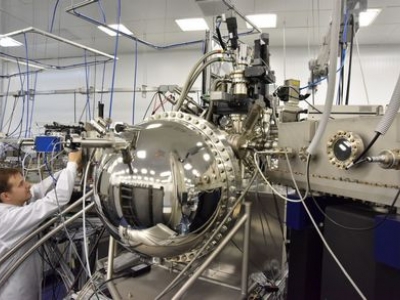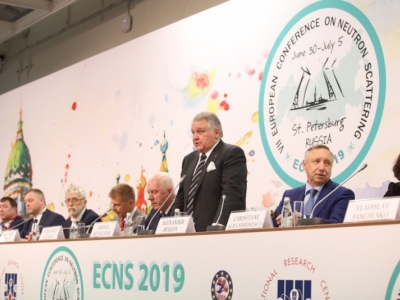A new particle at the Large Hadron Collider was discovered by scientists from the NRC "Kurchatov Institute" – ITEP

At the end of February, the international community LHCb (CERN) announced the discovery of a new state of charmonium — a particle consisting of a “charmed” quark and an antiquark. For the first time, this particle was observed with the value 3 of spin. The obtained results allowed to refine the quark model. The experts analyzed the data collected by the LHCb experiment at the Large Hadron Collider from 2011 to 2018. The discovery of the new particle was carried out by the staff of the NRC "Kurchatov Institute" – ITEP Ivan Beliaev and Viktor Egorychev.
Charmonium is one of the types of quarkonia, i.e. a particle consisting of an enchanted quark and an antiquark. This state is called the closed-charm system. In the usual state of such a system, the quantum number of spin is either zero or one. Observation of particles with higher spins is extremely rare.
The discovery of this particle allows to close the "blank spaces" of Standard Model, which is unique theoretical tool that gives the opportunity to describe the entire knowledge on the particle physics. According to this model, many predictions have been made, so the discovery of a new state of a particle confirms the previously expressed assumptions. The triumph of the Standard Model is the discovery of the Higgs boson.
In the 1970s scientists came to the conclusion that for the further development of particle physics a coupled system of heavy quarks is needed. Namely, the system, where the binding energy would be small compared with the masses of quarks. There quarks would move with velocities lower than the speed of light, and this made it possible to eliminate many of the complications of theoretical models associated with the theory of relativity. Such a non-relativistic quark system, consisting of an enchanted quark and an anti-quark, was discovered in 1974. Its discovery was made independently by two research teams: a group at the Stanford Linear Accelerator Center, led by Burton Richter, and a group at Brookhaven National Laboratory, led by Samuel Ting. Mr. Richter and Mr. Ting for their joint discovery received the Nobel Prize in Physics in 1976. The discovery of this particle in scientific literature is often called the “November Revolution”. Similar to ordinary atoms such as hydrogen, a quark pair can be in different quantum states. A special place in the physics of elementary particles is occupied by mesons, for which the quark model allows quantitative calculation of the mass spectra. These are the meson families consisting of heavy quarks — charmonium and bottomonium. Their spectra are similar to the spectra of hydrogen-like atoms. The study of such systems (quarkonia) provides important information about the nature of strong interaction.
In their work, the researchers of the international community LHCb analyzed the data collected at the LHC. In particular, experts studied the spectrum of constant masses of both neutral and charged mesons with an open charm. Gradually, scientists have discovered a narrow peak ("resonance"), which pointed to a new particle with a mass of 3842 MeV. Therefore, it was called X (3842). It is important that for the first time scientists were able to observe charmonium with a spin value of 3. It is interesting to note that the July 2014 LHCb experiment discovered another state with spin 3 in the system of strange charmed mesons. Other states with charmed quarks, having such a high spin, are not yet known to science. In addition, in the same work, other previously known states of charmonium ψ(3770) and χc2(3930) were investigated. However, it should be noted that these states were first observed in proton-proton collisions.
The continuing interest in the study of charmonium is due to the fact that its characteristics can be used both to study the properties of the elements themselves and the dynamics of their interactions. The attractive prospects for research on quarkonia led to the creation of a series of experimental installations for its studying. In recent years, there has been a surge of interest in charmonium spectroscopy after the discovery of states that are not described by standard theoretical models of quarkonia. In some cases, after the discovery of a new particle, it is difficult to conclude whether a new experimentally discovered state is a previously unidentified state of charmonium or a new exotic particle, for example, such as a tetraquark consisting of four quarks. Therefore, knowledge of the spectrum of ordinary states of charmonium is important in order to help identify exotic states: if we take into account all the predicted “ordinary” states, we can be more confident that the others are exotic.
Source (in Russian): http://www.nrcki.ru/






